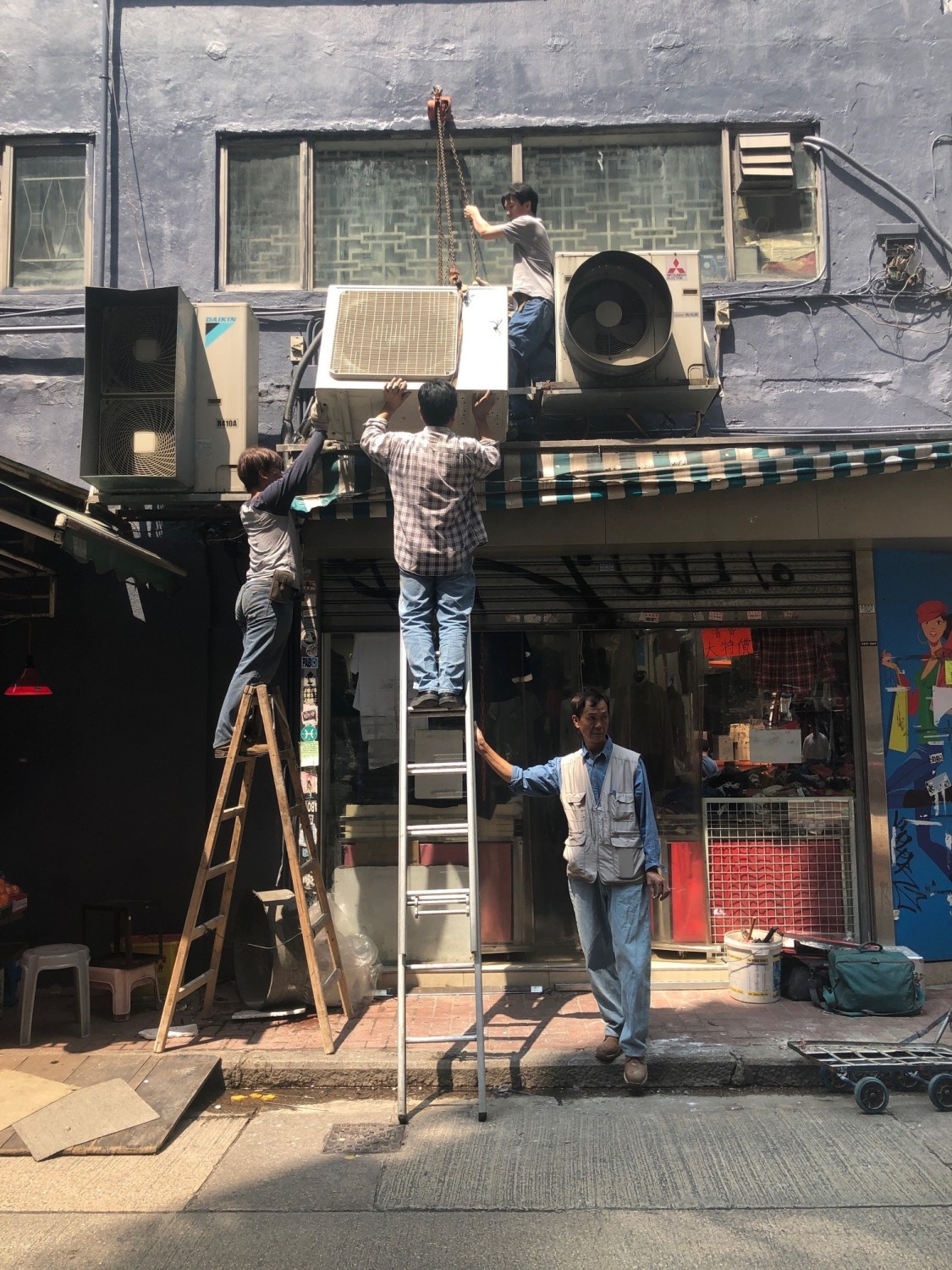The Labour Pains Holding Back Hong Kong’s Big Build
Shortage of labour is holding back Hong Kong’s ambitious infrastructure plans. Simon Wilde looks at some of the government’s measures including the labour importation scheme.
During his October 2022 policy address, the Hong Kong Chief Executive, John Lee, confirmed that a number of large-scale construction projects, including the Kau Yi Chau artificial islands and Northern Metropolis projects, would be fast tracked to drive the development of Hong Kong’s housing and transport infrastructure. These mega projects sit aside the numerous other public works planned for Hong Kong over the next decade. The immense scale of the proposed works planned through to 2036 is captured in our animation.
Labour Crunch
Even before the Government announced their plans for these projects, concerns had been raised in respect of the construction industry’s aging workforce and the chronic shortfall in the number of skilled and unskilled workers. The Hong Kong Construction Association (HKCA) previously found that 42% of a total of over 200,000 registered construction workers were aged 50 or above as of June 2018. This means that as of today in 2023, these workers, 56% of whom were skilled workers, are now over 55 years old.

(c) David Feehan
The HKCA also raised its concern that from 2012 to 2018 most of the construction trainees aged under 35, chose not work in the construction industry after completing their training. Out of only 30,000 trainees who completed their formation, which represents 5,000 trainees per year, less than half remained in the industry one year after completing their training.
Ms Bernadette Linn, the Secretary for Development, recently stated that the shortage of workers in the construction industry is expected to increase from the current 15,000 to 20,000, to over 40,000 in the next five years.
This clearly shows that the industry is not only facing a labour crunch but it is also facing a productivity crunch as the aging labour force will not be able to maintain the same output over the coming years.
These two factors have been identified as the most serious obstacles to the implementation of the Government’s vast development plans and ensuring that they are completed on time and on budget.
Labour Import Scheme
- Implementing a labour importation scheme (LIS) with more streamlined procedures than those in the Supplementary Labour Scheme (SLS) which is currently in force in Hong Kong.
- Enhancing the coverage and operation of the SLS, the Enhanced Supplementary Labour Scheme.
For the construction industry, the LIS would apply to technicians, skilled and semi-skilled workers as well as Site Supervisory Personnel (SSP) and would allow the employers to apply for quotas for the importation of labour. The total quota would not be allowed to exceed 12,000 initially.

East Lantau Waters, Site of Kau Yi Chau Artificial Islands (c)David Feehan
The scheme would be subject to the following controlling parameters:
- The application for quota will be subject to approval by the Permanent Secretary for Development subject to advice from an Inter-departmental Committee.
- Applications for quota can only be submitted by principal contractors of “eligible projects”, with public sector projects with a value of no less than HK$1 billion being prioritised. The scheme will apply to 29 trades of skilled workers and 18 positions of technicians and SSP.
- A manning ratio of 1 imported worker to 2 full-time local workers will be implemented.
- The principal contractors are required to provide centralized accommodation for the imported workers at specified locations either in Hong Kong or the Mainland. The Government stated that the expectation is for the imported workers to reside in Hong Kong but a smaller number would still be allowed to be based on the Mainland.
The accommodation of the imported workers is one of the most contentious points and questions have been raised throughout the industry about the location of these specified accommodations and the logistics involved in getting the workers to and from the sites every day without impacting the local residents.
The Government originally suggested that the COVID-19 quarantine facilities in Tam Mei, Yuen Long, would be turned into a central dormitory for the workers. Ms Linn announced on 16 October 2023 that the dormitory was ready to open by the month’s end and would accommodate 7000 workers.
Modular Integrated Construction (MiC)
In light of the objections from the industry stakeholders, the Government has emphasised that the importation of labour is only one of the approaches which has been taken to alleviate the labour crunch. The other approaches include enhancing the training programmes to bring in new local blood to the industry and the adoption of innovative technologies such as Modular Integrated Construction (MIC).

(c) Shutterstock
MIC consists of designing structures in a modular form so that the modules can be constructed in a factory and delivered to site fully fitted out. With the only the assembly of the modules on site required, the amount of site labour and skilled trades required is drastically reduced. To gain the benefits from a labour perspective, module construction would be completed in the Mainland.
Industry Objections
The Hong Kong Construction Industry Employees General Union (HKCIEGU) conducted a survey of 608 construction workers which showed that 81.3% disagreed with the Government’s plan to import workers. 76.8% considered that this would result in more local unemployment whilst 70.5% believed that this would result in a drop in salaries. The HKCIEGU also argued that the mechanism would create competition which would discourage young Hongkongers from entering the industry since they would be competing with more experienced imported labour.
Representatives of some of the skilled workers unions, such as the Hong Kong and Kowloon Bamboo Scaffolding Workers Union, suggested that there is no real labour shortage and that if workers were provided with reasonable working conditions, salary level and were set reasonable deadlines, these would be sufficient incentives to attract workers to the industry. The unions have decried the ever-increasing drive to complete work faster and at lower costs whilst treating the workers like “robots” and requiring them to work in poor conditions.

(c) Shutterstock
The HKCIEGU has also raised concerns in respect of the impact of the importation scheme on the wage levels. It is unclear whether this will materialize as, under the scheme, the Government has required that imported workers be paid prevailing median wages.
However, the Macau Federation of Trade Union (MFTU) has highlighted that under the Hong Kong Government’s scheme, the imported labour would be paid on a monthly basis whereas over 80% of the Hong Kong workers are currently paid on the basis of daily wages. The MFTU suggested that this could result in the main contractors favouring the imported workers and turning the local workers in “reserve workers”.
The Hong Kong Construction Association (HKCA) has sought to reassure the local industry stakeholders by highlighting that the procedures put in place by the Government to monitor the hiring of the imported labour under the scheme have been devised to guarantee local employment.
The Way Ahead – A Fine Balance

Labour Importation – A fine balance (c) David Feehan
There is a clear need for additional labour resources to meet the tight deadlines for delivery of the government’s proposed infrastructure. Training new local workforce is a must, however, completing such training and obtaining the necessary on-the-job experience takes time and a solution is needed in the interim. In view of the scale, quantity and timelines associated with the government’s upcoming projects, it is difficult to see how contractors could meet the completion targets without importing experienced workers in the short term.
Contract Dispute Consultants (CDCHK)
CDCHK are Hong Kong’s leading claims and contractual consultancy providing support to contractors working on complex infrastructure and building projects worldwide. Recent assignments have included acting for contractors on rail projects in Canada and Hong Kong, cable stayed bridges in the United States, Canada and Hong Kong, power projects in the UK and airport projects.
